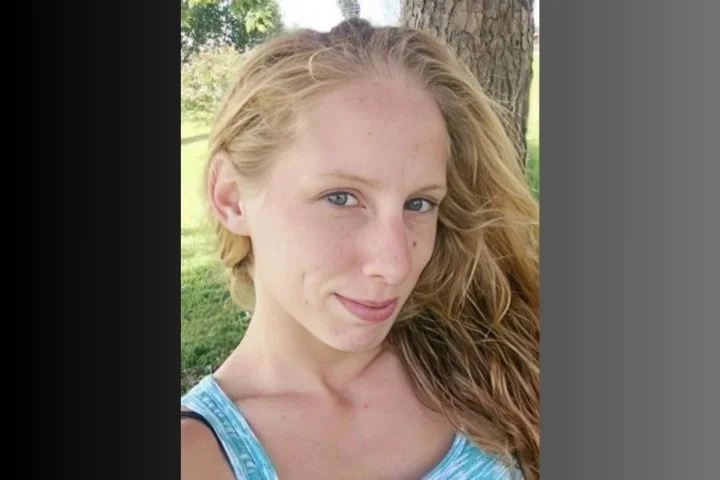Martha Leanne Green finished her shift at the Holiday Inn in Dickson, Tennessee around 9:00 pm on Wednesday, April 15, 1987. The 17-year-old, who preferred to be called by her middle name, had arranged to be picked up from work by her twin brother, Lawson Green. Lawson borrowed his cousin’s 1979 Monte Carlo and was waiting outside the hotel when Leanne got done. The drive from the Holiday Inn to the twins’ home in White Bluff, Tennessee was only about 10 miles, but it soon became clear that they weren’t going to get there quickly; they were only a mile into the drive when the Monte Carlo ran out of gas.
Lawson managed to guide the car onto the shoulder of Highway 46 and turn on the vehicle’s hazard lights. As he and Leanne discussed what they should do, a car pulled in behind them to see if they needed any assistance. The car’s occupants, a family of four who were on their way home from a Wednesday night church service, offered to drive the twins to the nearest gas station. Lawson accepted their offer, but Leanne was hesitant. Lawson tried to assure her that everything would be fine but she refused to get into the family’s car. She told Lawson that she would wait with their vehicle while he went to get gas.
Realizing that nothing was going to change his sister’s mind, Lawson left her sitting in the passenger seat of the Monte Carlo while he caught a ride to the gas station. When Lawson was dropped back off at the car less than 10 minutes later, however, there was no sign of Leanne. There were no clues indicating what had happened to the teenager and she was never seen again.
When Lawson checked inside the Monte Carlo, he found Leanne’s purse along with the keys to the vehicle. There was no sign of a struggle inside or around the car; Leanne had simply disappeared. Lawson wasn’t sure what he should do, so he returned home to his parents and they called the police.
Deputies from the Dickson County Sheriff’s Department immediately determined that Leanne was missing under suspicious circumstances; they believed she had been abducted from the side of the road. The Monte Carlo had run out of gas on Highway 46 in the city of Pomona, and Lawson had parked it near where the railroad tracks crossed the highway. Police combed through the surrounding area but found no clues to Leanne’s whereabouts.
Investigators made a public appeal for information, hoping that someone who had been driving on Highway 46 around the time Leanne went missing might have seen something, They asked for anyone who had seen a second vehicle pulled over near the Monte Carlo to contact detectives immediately, but only a few tips were received.
By Friday, Leanne’s family was growing increasingly desperate to learn what had happened to the teenager. Her father, George Green, was asked by reporters if he could think of anyone who would have wanted to hurt his daughter, but he couldn’t think of anyone. Leanne was a friendly and popular young woman who went to church with her family every Sunday and enjoyed taking care of children. She was a junior at Dickson High School and she got along well with her teachers and classmates.
Family friend Gilbert Taylor attended the same church as the Greens and told reporters that everyone liked Leanne. “If I had to tell you in a few words about Leanne, she was a beautiful, young, outstanding lady.” Leanne’s mother, Margie Green, said her daughter never got into any kind of trouble. “She has never spent the night anywhere or ever gone anywhere for any length of time without me knowing where she was — even in broad daylight.”
Leanne’s junior prom was supposed to be held that week and she had been excited about going. She had saved money from her job at the Holiday Inn and purchased a pink prom dress with matching pink shoes and accessories. Blain Snyder, her prom date, said Leanne was quiet and extremely kind. “She went to church a lot. I don’t think she had any enemies. She was just a real nice person…she is so different from everyone else I’ve dated.”
Residents of White Bluff started collecting money so they could offer a reward for information leading to Leanne’s recovery. Jamie Heath, a dispatcher for the Dickson County Sheriff’s Department, admitted that they hadn’t received any solid leads. “Everything’s a d*ead end. Everybody’s seen something but nobody’s seen anything. I wish I could tell you different, but everything’s come up a de*ad end so far. There’s nothing to report.”
Around 60 volunteers assisted in the search for Leanne; they spent two days scouring Dickson County for any sign of the missing teenager. By Friday night, they were starting to lose hope that she was going to be found. Fritz Sander, the rescue wilderness chief of the Dickson County Rescue Squad, had helped coordinate the search. He was confident that Leanne was not in any of the areas that had been covered by the search teams, which included a 10-mile area surrounding where her car was found.
On Saturday, the search teams branched out, combing more than 20 miles of roads in Dickson County and neighboring Hickman County. Blain joined the search party, while George traveled to Hickman County and spent the day distributing flyers with his daughter’s picture on them. Detectives followed up on a few potential sightings of the missing teenager but were unable to confirm any of them.
Margie sat at home and listened to a police scanner, praying that she would hear word that her daughter had been found. Sunday was Easter, and she hoped that Leanne would be home in time to celebrate the holiday. “Oh, Lord…wouldn’t it be wonderful if they find her before Sunday. Then we could praise God.”
The physical search for Leanne was called off Saturday night. Searchers had spent three days scouring the area but failed to find a single clue as to what had happened to Leanne. Dickens County Detective Jerry Hayes admitted that foul play was the most likely scenario. “We feel she’s been abducted. She’s not the type of girl who would run off.”
Detectives received a tip that a wine-colored Ford had been seen in the area where Leanne disappeared; it wasn’t much to go on, but it was one of the few potential leads investigators had and they asked for help from the public in identifying the car.
A week after Leanne vanished, police set up a roadblock on Highway 46 near where the Monte Carlo had run out of gas. Detectives stopped each car that drove on that portion of the highway between 8:45 pm and 10:00 pm, hoping to find someone who had been driving on it at the same time the previous week. They found several potential witnesses and arranged to bring them in for formal interviews.
Investigators continued to interview people and follow up on potential leads for the next several weeks, but they still weren’t sure what had happened to Leanne. Her family was devastated by her disappearance and struggled to adjust to life without her. George admitted that the family had been forced to put their lives on hold. “We just live one day at a time. We’ve dropped everything to concentrate on this.” As Mother’s Day approached, Margie wanted no other gift than to have her daughter back home. Sadly, the day passed without any progress on Leanne’s case.
Leanne’s twin brother seemed to take her disappearance the hardest. Lawson opted not to return to school that year; a homebound teacher checked in on him weekly so he could complete his assignments without having to leave his house. Margie noted, “He doesn’t say too much, but by his actions, I know he feels somewhat responsible. We just try to tell him it could have happened wherever she went. It could happen to anyone.”
Detectives continued to believe that Leanne had been abducted, and the Tennessee Bureau of Investigation as well as the FBI were assisting the Dickson County Sheriff’s Department in the investigation. Although everyone was hoping that Leanne would be found alive, investigators admitted that their hope grew a little dimmer each day.
Margie was certain that Leanne wouldn’t have willingly gotten into a car with a stranger; she believed Leanne had either been forced into a vehicle by someone with a weapon or she had been enticed by someone she knew and trusted. Detectives had interviewed everyone within Leanne’s social circle, however, and didn’t believe any of them were responsible. Although stranger abductions were exceedingly rare, investigators feared that was what they were dealing with in this case.
By May 10, 1987, the reward for information had grown from $500 to $5,000, and more donations continued to come in. Leanne’s family was grateful for the support of the community; they thanked everyone for donating both their time and money to the search effort. Margie said that everyone’s support was helping the family cope with the situation.
On May 13, 1987, the Tennessee Bureau of Investigation set up a tip line specifically for Leanne’s case; anyone who had any information was asked to call and speak with an investigator. TBI Agent John Carney admitted that they were setting up the tip line because they were running out of leads. “We’re getting to a point where we’re not getting much information.” The reward in the case was up to $8,500, and detectives were hopeful that this might entice someone to call.
Agent Carney stated that detectives had run down more than 200 investigative leads but none of them brought them any closer to Leanne. They were still in the process of checking on a number of vehicles that had been seen in the vicinity of the Monte Carlo. “There were some people who stopped, and some individuals who were on the scene but have not come forward yet.” While he believed it was likely most of these people had offered assistance and then drove off when Leanne declined, detectives still wanted to talk to them.
Through interviews with other drivers, Agent Carney noted, “Detectives have the abduction time narrowed down to 5 to 7 minutes. It’s absolutely frustrating.” Investigators were looking at similar cases from Oklahoma and Arkansas to see if there were any links; all involved young women who appeared to have been abducted from their car on a highway.
Two months after Leanne vanished, Margie said she was still holding on to the hope that she would be found alive. “We released a bunch of balloons today with her flyer in them…I just know there’s someone somewhere who knows something.”
In August 1987, officials announced that they had identified a potential suspect in Leanne’s abduction. Robert Richards, a 22-year-old from Memphis, Tennessee, was suspected of abducting and mu*rdering Teresa Butler in November 1986. Teresa, a 26-year-old nursing student from Memphis, went missing while driving home from a shift at a Memphis hospital. Her car was found abandoned on a rural road; the car was still running when it was found. Teresa was still missing and presumed dead.
Robert Richards became a suspect in Teresa’s case after he was arrested for impersonating a police officer and attempting to abduct a young woman in Hardeman County. The positioning of Teresa’s car when it was found suggested that she had likely been pulled over, though there was no record of any law enforcement officer in the area at the time she went missing. Detectives theorized that Richards had likely pulled her over by pretending to be a cop, then abducted and killed her. It was possible he had used the same ruse to get Leanne out of the Monte Carlo.
Agent Carney wasn’t so sure Richards was the man he was looking for but agreed to send a detective to question him while he was being held in a Memphis jail. “I think law enforcement officials in Shelby and Hardeman Counties have over-exaggerated the possibility of Richards’ involvement with Leanne.” He noted that they had no concrete evidence linking him to the crime but he was willing to look into the possibility.
Richards allegedly told a friend that he had raped and killed a 16-year-old girl with brown hair; although some investigators believed that this could have been Leanne, who was 17 years old when she vanished, others noted that Richards had made several contradicting statements and it was unclear if anything he said was the truth.
While in custody, Richards confessed to killing Teresa Butler, but he later recanted his confession and investigators were unable to find her body. Detectives were also having trouble linking him to Leanne. Dickson County Deputy Tom Wall admitted, “We haven’t been able to put Richards in our county…the nearest we can put him in our area right now is in May in Hickman County.”
By October 1987, Leanne had been missing for six months and her family had accepted the fact that they likely weren’t going to find her alive. Margie wanted the killer to be found. “I hope it’s handled in such a way that he will be punished because of this. Leanne was minding her own business and someone snatched her up and snuffed out her life at 17.”
Deputy Wall admitted that the case was frustrating. “We don’t have anything new…[and] we’ve put more time and manpower into this case than anything in the history of Dickson County.” Detectives were still trying to link Richards to the case but hadn’t had any luck finding any solid evidence.
Soon it was April again and Leanne’s family marked the grim first anniversary of her disappearance. There had been little progress on the case, though Dickson County District Attorney General Kenneth Atkins said it remained a priority. “The TBI administered a polygraph test a few weeks ago in this case, but it didn’t turn up anything good for us. They did some diving a week or so back, but nothing was found. We’re just covering all the bases.”
While he was in jail, Robert Richards told officials that he killed Leanne and could lead them to her body. He then proceeded to give a number of conflicting statements about where she was buried; detectives followed up on each one but were unable to locate Leanne. Assistant District Attorney Dan Cook believed Richards was most likely lying. “There’s absolutely no evidence to indicate that this individual was responsible for her disappearance.” He thought that Richards was falsely confessing because it allowed him to spend time outside of jail as he tried to lead investigators to Leanne’s body. “There are people who will do or say anything to get out for a few days.”
On October 27, 1990, Leanne’s family held a memorial service for her. Margie noted, “It’s not because we’ve discovered anything new about her whereabouts, but it will help us vent our grief.”
Robert Richards was m*urdered in prison on July 21, 1991. If he was the person responsible for Leanne’s abduction and mu*rder, he took his knowledge of her burial spot to his grave. He had spent the four years leading up to his de*ath admitting and then denying that he had anything to do with Leanne’s disappearance; he seemed to enjoy the attention he got from detectives whenever he would offer a confession. Investigators remain divided on whether or not he was the person who abducted Leanne and they continue to search for her body.
Martha Leanne Green was just 17 years old when she went missing from Highway 46 outside of White Bluff, Tennessee in April 1987. She was a sweet and friendly girl who was looking forward to going to her junior prom that week, but the experience was stolen from her by an unknown person. Leanne has green eyes and brown hair, and at the time of her disappearance, she was 5 feet 6 inches tall and weighed 120 pounds. She was last seen wearing blue jeans, a white sweatshirt, and white high-top sneakers; she was also wearing brown-tinted contact lenses. Leanne’s ears were pierced and she has a birthmark on her chest. If you have any information about Leanne, please contact the Dickson County Sheriff’s Department at 615–789–4130 or the Tennessee Bureau of Investigation at 615–952–4989.






